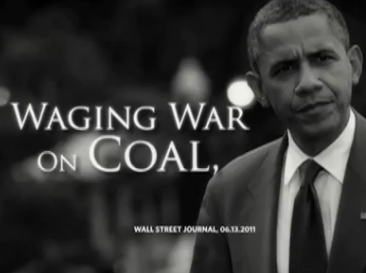New EPA rules are a breath of fresh air

By Dr Anthony Horton
As part of the Obama Administration’s push to implement stricter environmental regulations, the US Government has announced a nationwide ground level ozone limit of 70 ppb. As the ground level ozone concentrations across the US are so variable, the 70 ppb limit will be introduced as early as 2020 in some regions and by 2037 in others.
The 70 ppb limit was determined following an EPA review which included more than 1,000 published studies since the last review in 2008. The ultimate aim of the revised limit is to significantly improve public health protection which will result in fewer premature deaths and lower reported absence from school and work. The EPA estimates that the benefit could be in the order of $3-6 billion per year in a decade, outweighing the compliance cost of $1.4 billion.
Ground level ozone is formed as a result of a series of chemical reactions involving a variety of sources including vehicle traffic and industrial areas. It is known to affect the respiratory system and to result in individuals having difficulty breathing and suffering airway inflammation. EPA Administrator Gina McCarthy stated that the limit provided protection for people that are susceptible to the effects of air pollution and that it was the EPA’s job to set science based standards that facilitate that protection.
It could be said that ozone is one pollutant struggling to gain and maintain attention in the face of the extensive discussion of greenhouse gas emissions and climate change. Ozone is symptomatic of cities with rapidly growing populations, a reliance on cars as the primary weekday mode of transport and Governments that lack the political will to tackle traffic congestion and to require industry to move towards best practice emissions control technology and ensuring that environmental monitoring is conducted appropriately as per operating licence conditions.
The EPA is to be applauded for revising the ozone limit from an environmental as well as health perspective, as ozone is a significant pollutant in city areas around the world. However, as significant as ozone is, it is important to recognise that there is more to the ozone phenomena than identifying sources and reducing emissions from those sources using a range of mechanisms or regulatory instruments.
An appreciation of the local weather conditions (eg. seasonal temperatures and predominant/prevailing wind directions) is obviously important, as the prevailing wind directions throughout the year will influence in what direction and how far those emissions travel and where they will ultimately impact the community.
In May this year Infrastructure Australia highlighted the need for significant investment to avoid potentially crippling congestion in Australian cities, with Sydney home to seven of the worst road corridors in the country. Their report put the price of congestion as $13.74 billion in 2011 and estimated that the price by 2031 could be as much as $53 billion.
The report discussed a number of roads that require urgent attention in order to underpin Australia’s productivity and employment growth going forward, and a number of initiatives including the use of tolls and other pricing.
I can’t help but wonder the extent to which ozone concentrations could increase between now and 2031 in Australian cities under the scenario painted in the Infrastructure Australia report. By extension I wonder what the cost of these higher ozone concentrations in terms of health and lost productivity would be, and why this wasn’t looked into either as part of this report. Based on the ever increasing knowledge with regards to the health impacts of air pollution and the increasing level of interest from the general public as evidenced by scanning social media, I believe strongly that it should be discussed in Australia.
Granted we probably have more than our fair share of blue skies in Australia compared to some other countries, however that shouldn’t be a reason not to raise the issue of ozone and other air pollutants. Many pollutants are formed as a result of complex reactions in the atmosphere and may not be detectable by the naked eye, however that doesn’t mean they shouldn’t be investigated or aren’t as potentially (or even more) harmful than the pollutants we may be able to see.
The recent Volkswagen revelations that spread rapidly around the world may be the catalyst that promotes a discussion of air pollution. From my perspective it is difficult to see how an issue that is receiving as much attention as it is would not prompt people to think about where those emissions end up-ultimately in the air around and above them, and, given that we breathe that air, what the cost of breathing that air may be. I for one would most definitely welcome that discussion.
This article was originally published on The Climate Change Guy.
 About the author: Anthony Horton holds a PhD in Environmental Science, a Bachelor of Environmental Science with Honours and a Diploma of Carbon Management. He has a track record of delivering customised solutions in Academia, Government, the Mining Industry and Consulting based on the latest wisdom and his scientific background and experience in Climate/Atmospheric Science and Air Quality. Anthony’s work has been published in internationally recognised scientific journals and presented at international and national conferences, and he is currently on the Editorial Board of the Journal Nature Environment and Pollution Technology. Anthony also blogs on his own site, The Climate Change Guy.
About the author: Anthony Horton holds a PhD in Environmental Science, a Bachelor of Environmental Science with Honours and a Diploma of Carbon Management. He has a track record of delivering customised solutions in Academia, Government, the Mining Industry and Consulting based on the latest wisdom and his scientific background and experience in Climate/Atmospheric Science and Air Quality. Anthony’s work has been published in internationally recognised scientific journals and presented at international and national conferences, and he is currently on the Editorial Board of the Journal Nature Environment and Pollution Technology. Anthony also blogs on his own site, The Climate Change Guy.









2 comments
Login here Register here-
RosemaryJ36 -
CommonA
Return to home pageOf course, having had no Minister for Science for the last two years has not helped government look at science in a productive way!
According to wikipedia:
While: “Low level ozone (or tropospheric ozone) is an atmospheric pollutant.[27] It is not emitted directly by car engines or by industrial operations, but formed by the reaction of sunlight on air containing hydrocarbons and nitrogen oxides that react to form ozone directly at the source of the pollution or many kilometers down wind.”
Also: “Certain electrical equipment generate significant levels of ozone. This is especially true of devices using high voltages, such as ionic air purifiers, laser printers, photocopiers, tasers and arc welders. Electric motors using brushes can generate ozone from repeated sparking inside the unit.”
I’m sure the former is the target of the legislation, but there are side effects for other industries… perhaps the police department will have to start shooting people again? And high-voltage-power-lines might need a raincoat, or be put underground so they don’t produce a corona discharge of ozone… etc….oh and ban all lightning strikes too… or are we just going to point the finger at industry and cars again?